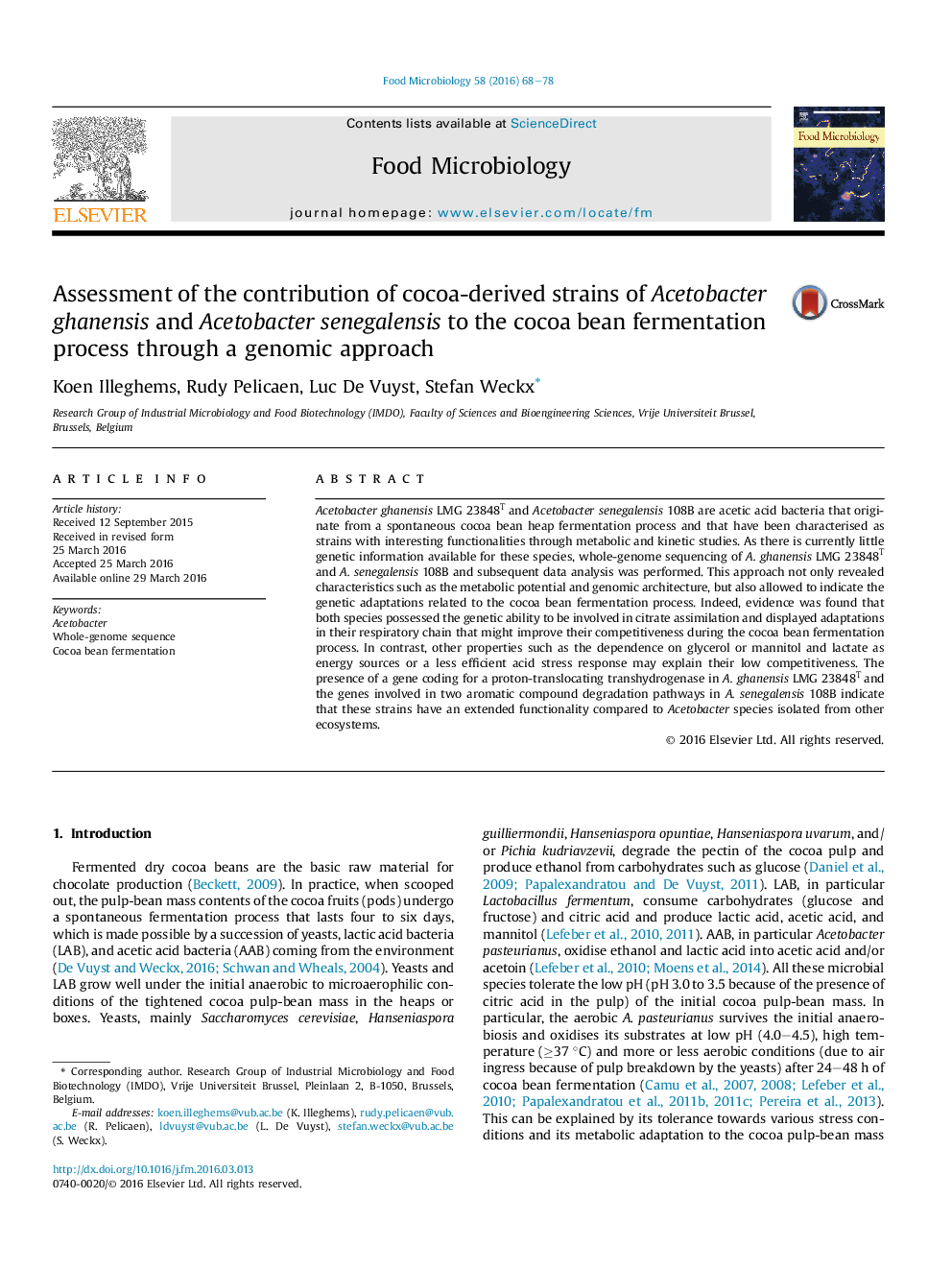| کد مقاله | کد نشریه | سال انتشار | مقاله انگلیسی | نسخه تمام متن |
|---|---|---|---|---|
| 4362578 | 1616243 | 2016 | 11 صفحه PDF | دانلود رایگان |

• Unravelling the genome sequence of Acetobacter ghanensis and A. senegalensis.
• Genetic adaptations typical to the cocoa bean fermentation process.
• New insights into selection criteria for acetic acid bacteria as starter cultures.
• Comparative genome sequence analysis provided insights into the genus Acetobacter.
Acetobacter ghanensis LMG 23848T and Acetobacter senegalensis 108B are acetic acid bacteria that originate from a spontaneous cocoa bean heap fermentation process and that have been characterised as strains with interesting functionalities through metabolic and kinetic studies. As there is currently little genetic information available for these species, whole-genome sequencing of A. ghanensis LMG 23848T and A. senegalensis 108B and subsequent data analysis was performed. This approach not only revealed characteristics such as the metabolic potential and genomic architecture, but also allowed to indicate the genetic adaptations related to the cocoa bean fermentation process. Indeed, evidence was found that both species possessed the genetic ability to be involved in citrate assimilation and displayed adaptations in their respiratory chain that might improve their competitiveness during the cocoa bean fermentation process. In contrast, other properties such as the dependence on glycerol or mannitol and lactate as energy sources or a less efficient acid stress response may explain their low competitiveness. The presence of a gene coding for a proton-translocating transhydrogenase in A. ghanensis LMG 23848T and the genes involved in two aromatic compound degradation pathways in A. senegalensis 108B indicate that these strains have an extended functionality compared to Acetobacter species isolated from other ecosystems.
Journal: Food Microbiology - Volume 58, September 2016, Pages 68–78